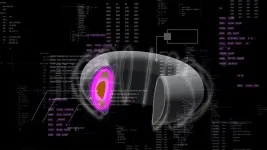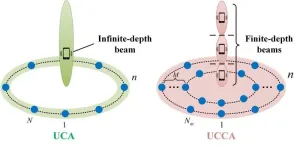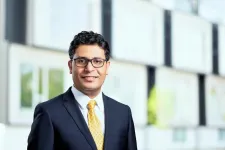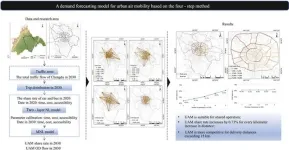(Press-News.org) Achieving a sustained fusion reaction is a delicate balancing act, requiring a sea of moving parts to come together to maintain a high-performing plasma: one that is dense enough, hot enough, and confined for long enough for fusion to take place.
Yet as researchers push the limits of plasma performance, they have encountered new challenges for keeping plasmas under control, including one that involves bursts of energy escaping from the edge of a super-hot plasma. These edge bursts negatively impact overall performance and even damage the plasma-facing components of a reactor over time.
Now, a team of fusion researchers led by engineers at Princeton and the U.S. Department of Energy’s Princeton Plasma Physics Laboratory (PPPL) have successfully deployed machine learning methods to suppress these harmful edge instabilities — without sacrificing plasma performance.
With their approach, which optimizes the system’s suppression response in real-time, the research team demonstrated the highest fusion performance without the presence of edge bursts at two different fusion facilities — each with its own set of operating parameters. The researchers reported their findings on May 11 in Nature Communications, underscoring the vast potential of machine learning and other artificial intelligence systems to quickly quash plasma instabilities.
“Not only did we show our approach was capable of maintaining a high-performing plasma without instabilities, but we also showed that it can work at two different facilities,” said research leader Egemen Kolemen, associate professor of mechanical and aerospace engineering and the Andlinger Center for Energy and the Environment. “We demonstrated that our approach is not just effective — it’s versatile as well.”
The costs of high-confinement
Researchers have long experimented with various ways to operate fusion reactors to achieve the necessary conditions for fusion. Among the most promising approaches involves operating a reactor in high-confinement mode, a regime characterized by the formation of a steep pressure gradient at the plasma’s edge that offers enhanced plasma confinement.
However, the high-confinement mode has historically come hand-in-hand with instabilities at the plasma’s edge, a challenge that has required fusion researchers to find creative workarounds.
One fix involves using the magnetic coils that surround a fusion reactor to apply magnetic fields to the edge of the plasma, breaking up the structures that might otherwise develop into a full-fledged edge instability. Yet this solution is imperfect: while successful at stabilizing the plasma, applying these magnetic perturbations typically leads to lower overall performance.
“We have a way to control these instabilities, but in turn, we’ve had to sacrifice performance, which is one of the main motivations for operating in the high-confinement mode in the first place,” said Kolemen, who is also a staff research physicist at PPPL.
The performance loss is partly due to the difficulty of optimizing the shape and amplitude of the applied magnetic perturbations, which in turn stems from the computational intensity of existing physics-based optimization approaches. These conventional methods involve a set of complex equations and can take tens of seconds to optimize a single point in time — far from ideal when plasma behavior can change in mere milliseconds. Consequently, fusion researchers have had to preset the shape and amplitude of the magnetic perturbations ahead of each fusion run, losing the ability to make real-time adjustments.
“In the past, everything has had to be pre-programmed,” said co-first author SangKyeun Kim, a staff research scientist at PPPL and former postdoctoral researcher in Kolemen’s group. “That limitation has made it difficult to truly optimize the system, because it means that the parameters can’t be changed in real time depending on how the conditions of the plasma unfold.”
Raising performance by lowering computation time
The Princeton-led team’s machine learning approach slashes the computation time from tens of seconds to the millisecond scale, opening the door for real-time optimization. The machine learning model, which is a more efficient surrogate for existing physics-based models, can monitor the plasma’s status from one millisecond to the next and alter the amplitude and shape of the magnetic perturbations as needed. This allows the controller to strike a balance between edge burst suppression and high fusion performance, without sacrificing one for the other.
“With our machine learning surrogate model, we reduced the calculation time of a code that we wanted to use by orders of magnitude,” said co-first author Ricardo Shousha, a postdoctoral researcher at PPPL and former graduate student in Kolemen’s group.
Because their approach is ultimately grounded in physics, the researchers said it would be straightforward to apply to different fusion devices around the world. In their paper, for instance, they demonstrated the success of their approach at both the KSTAR tokamak in South Korea and the DIII-D tokamak in San Diego. At both facilities, which each have a unique set of magnetic coils, the method achieved strong confinement and high fusion performance without harmful plasma edge bursts.
“Some machine learning approaches have been critiqued for being solely data-driven, meaning that they’re only as good as the amount of quality data they’re trained on,” Shousha said. “But since our model is a surrogate of a physics code, and the principles of physics apply equally everywhere, it’s easier to extrapolate our work to other contexts.”
The team is already working to refine their model to be compatible with other fusion devices, including planned future reactors such as ITER, which is currently under construction.
One active area of work in Kolemen’s group involves enhancing their model’s predictive capabilities. For instance, the current model still relies on encountering several edge bursts over the course of the optimization process before working effectively, posing unwanted risks to future reactors. If instead the researchers can improve the model’s ability to recognize the precursors to these harmful instabilities, it could be possible to optimize the system without encountering a single edge burst.
Kolemen said the current work is yet another example of the potential for AI to overcome longstanding bottlenecks in developing fusion power as a clean energy resource. Previously, researchers led by Kolemen successfully deployed a separate AI controller to predict and avoid another type of plasma instability in real time at the DIII-D tokamak.
“For many of the challenges we have faced with fusion, we’ve gotten to the point where we know how to approach a solution but have been limited in our ability to implement those solutions by the computational complexity of our traditional tools,” said Kolemen. “These machine learning approaches have unlocked new ways of approaching these well-known fusion challenges.”
The paper, “Highest fusion performance without harmful edge energy bursts in tokamak,” was published May 11 in Nature Communications. In addition to Kolemen, Kim and Shousha, co-authors include S. M. Yang, Q. Hu, A. Bortolon, and J. Snipes of PPPL; A. Jalalvand of Princeton University; S. H. Han, Y. M. Jeon, M. W. Kim, W. H. Ko, and J. H. Lee of the Korea Institute of Fusion Energy; J.-K. Park and Y.-S. Na of Seoul National University; N. C. Logan, A. O. Nelson, C. Paz-Soldan, and A. Battey of Columbia University; R. Nazikian of General Atomics; R. Wilcox of Oak Ridge National Laboratory; R. Hong and T. Rhodes of University of California, Los Angeles; and G. Yu of University of California, Davis. The work was supported by the U.S. Department of Energy, the National Research Foundation of Korea, and the Korea Institute of Fusion Energy.
END
AI approach elevates plasma performance and stability across fusion devices
2024-06-05
ELSE PRESS RELEASES FROM THIS DATE:
Tiny crop-health sensors could help cut the cost of groceries
2024-06-05
A compact, lightweight sensor system with infrared imaging capabilities developed by an international team of engineers could be easily fitted to a drone for remote crop monitoring.
This flat-optics technology has the potential to replace traditional optical lens applications for environmental sensing in a range of industries.
This innovation could result in cheaper groceries as farmers would be able to pinpoint which crops require irrigation, fertilisation and pest control, instead of taking a one-size-fits-all approach, thereby potentially boosting their harvests.
The sensor system can rapidly switch between edge ...
Uptake of tire wear additives by vegetables grown for human consumption
2024-06-05
Car tires contain hundreds of chemical additives that can leach out of them. This is how they end up in crops and subsequently in the food chain. Researchers at the Center for Microbiology and Environmental Systems Science at the University of Vienna and the Hebrew University of Jerusalem have now detected these chemical residues in leafy vegetables for the first time. Although the concentrations were low, the evidence was clear, a finding that is also known for drug residues in plant-based foods. The study was published in the internationally renowned journal Frontiers in Environmental Science.
The presence of drug residues in commercially sold fruit ...
Most older adults don’t know about resources that can help them navigate aging & caregiving
2024-06-05
Older Americans may be missing out on a wide range of programs and services that could help them meet their needs or assist their aging loved ones, a new poll suggests.
The new findings from the National Poll on Healthy Aging, based at the University of Michigan, show most older adults don’t know about important public resources for older adults and their caregivers, either by name or general description.
The poll asked more than 4,000 adults over age 50 about their awareness and use of Area Agencies on Aging (AAAs), State Health Insurance Assistance ...
Bone loss drugs can help azoles fight fungal infections
2024-06-05
Highlights:
Dermatophytes are fungi that cause skin, hair and nail fungal infections.
These infections often develop resistance to azoles, a common anti-fungal treatment.
A new study suggests that adding common bone loss drugs to azoles can improve efficacy.
In lab tests, combinations of these drugs worked against dermatophyte species and prevented resistance.
Washington, D.C.—Human skin, hair and nails are all vulnerable to fungal infections. While these infections are usually not serious, they’re difficult to fully resolve and often recur after treatment—sometimes for years. They’re also often resistant to treatments, including a common class of antifungals ...
Focusing ability enhancement in broadside direction of array: from UCA to UCCA
2024-06-05
Benefits of emerging near-field communications:
The progression of 5G mobile communication commercialization has spurred anticipation for 6G communication. To support emerging applications like digital twins, holographic video, and augmented reality (AR), extremely large-scale antenna array (ELAA) is regarded as key candidates for future 6G mobile communication due to its potential to enhance spectrum efficiency.
“Compared with 5G massive multiple-input multiple-output (MIMO) systems, 6G ELAA not only entails an increase in the number of antennas, but also signifies a fundamental shift in electromagnetic ...
Safer, cheaper, more flexible battery invented for wearable tech
2024-06-05
Researchers have developed a safer, cheaper, better performing and more flexible battery option for wearable devices.
A paper describing the ‘recipe’ for their new battery type was published in the journal Nano Research Energy on June 3.
Fitness trackers. Smart watches. Virtual-reality headsets. Even smart clothing and implants. Wearable smart devices are everywhere these days. But for greater comfort, reliability and longevity, these devices will require greater levels of flexibility and miniaturization of their energy storage mechanisms, which are often frustratingly bulky, heavy and fragile. On top of this, any improvements cannot come at the expense of ...
Case Western Reserve University researchers develop new method of DNA testing—expanding scientific innovation
2024-06-05
CLEVELAND—A team of researchers from the Case Western Reserve University School of Medicine has developed a new method for target DNA sequence amplification, testing and analysis.
This new technique, or reaction, known as AMPLON (Amplifying DNA with Multiarm Priming and Looping Optimization of Nucleic Acid), offers an alternative to the previously accepted “gold-standard” Polymerase Chain Reaction (PCR) method, opening the opportunity for more applications in medical diagnosis.
The team’s findings were recently published in the journal Advanced Materials.
“AMPLON ...
Advancing Urban Mobility: Chengdu's 2030 UAM Forecast
2024-06-05
Chengdu, a bustling city, is on the brink of revolutionizing its transportation landscape by introducing Urban Air Mobility (UAM). A recent study named “A demand forecasting model for urban air mobility in Chengdu, China” conducted by a team of researchers from the Institute of Geographic Sciences and Natural Resources Research, Chinese Academy of Sciences, proposes a sophisticated model to predict the future demand for UAM in Chengdu by 2030.
Urban Air Mobility refers to the use of Electric Vertical Take-Off and Landing (eVTOL) aircraft to transport people and goods across urban areas, potentially easing the notorious ...
Breaking down barriers: ROCK2 inhibition facilitates drug delivery in fibrotic pancreatic cancer
2024-06-05
Pancreatic cancer, recognized as one of the deadliest cancers, poses a persistent challenge for medical professionals globally due to its aggressive behavior and resistance to conventional therapies. The dense fibrotic tissue surrounding pancreatic tumors acts as a significant barrier, hindering the delivery of macromolecular drugs such as antibodies and nanomedicines. Therefore, addressing fibrosis is crucial in enhancing therapeutic outcomes for patients with pancreatic cancer, whose prognosis remains bleak.
Understanding the underlying mechanisms driving ...
Teens with later sleep schedules are less active, eat more carbohydrates
2024-06-05
DARIEN, IL – A new study to be presented at the SLEEP 2024 annual meeting found that circadian misalignment, which is highly prevalent in adolescents, is linked with carbohydrate consumption and sedentary behavior in teens.
Results show that a later sleep schedule was significantly associated with greater intake of carbohydrates, and this relationship was partially explained by irregular sleep timing. A later sleep schedule also was associated with greater sedentary behavior, even after adjusting for variables such as demographics, sleep disorders, and insufficient sleep.
“Delaying sleep schedules is normal during puberty and adolescence; however, some ...








